15 Ng. 100 Đ. Nguyễn Xiển, Thanh Xuân Nam, Thanh Xuân, Hà Nội 100000
Imagine a thriving modern city, vibrant with economic activity, yet nestled gracefully alongside a shimmering river that flows from China's largest inland freshwater lake. Picture lush orchards bearing fragrant pears that are prized across the continent, situated at the very northern edge of one of the world's most formidable deserts. This is Korla (Korla), often affectionately known as the "Pear City" (XiangliCheng) of Xinjiang. As the capital of the Bayingolin Mongol Autonomous Prefecture, Korla holds a crucial strategic position in central Xinjiang, serving as a vital link between the northern and southern branches of the ancient Silk Road. Far from being just a transit point, Korla offers travelers a unique blend of modern urban development, serene natural beauty centered around the Peacock River (KongqueHe) and Bosten Lake (BohuLake), and a tangible connection to both the industrious present and the storied past of this vast region. For those seeking to explore the diverse facets of Xinjiang beyond its more commonly visited cities, Korla presents a compelling and dynamic destination, a true oasis where green landscapes meet desert horizons.
Korla's identity is shaped by its pivotal geographical location and its evolving role from an ancient Silk Road stop to a contemporary economic powerhouse.
Korla's position is inherently strategic:
Central Location: It lies almost exactly in the center of Xinjiang Uyghur Autonomous Region, making it a natural crossroads.
Gateway to the Tarim Basin: Situated at the northeastern rim of the vast Tarim Basin (TarimPendi) and at the northern edge of the formidable Taklamakan Desert (TaklimakanShamo), Korla is often considered the gateway to Southern Xinjiang, facilitating travel to cities like Aksu and Kashgar.
Connection to Urumqi: It serves as a crucial link on the main road and rail lines connecting the capital, Urumqi, to the southern parts of the region.
Historically, Korla was a significant oasis on the Middle Silk Road (ZhongduanSichouZhilu), a branch of the ancient network that traversed the northern edge of the Tarim Basin.
Trade and Transit: For centuries, merchants, pilgrims, and envoys passed through Korla, replenishing supplies, resting their caravans, and exchanging goods and ideas between East and West.
Ancient Kingdoms: While Korla itself does not boast the grand ruins of cities like Turpan, its region was historically influenced by ancient kingdoms that flourished along this route, such as the Kingdom of Loulan to its east and the Kingdom of Kucha to its west, highlighting its historical strategic importance.
Cultural Exchange: This constant flow of people fostered a unique blend of cultures, including Turkic, Chinese, and Indian influences, leaving subtle yet enduring marks on the local heritage.
In the modern era, Korla has transformed dramatically, driven by its rich natural resources.
Petroleum Industry: The discovery and development of significant oil and natural gas fields in the Tarim Basin have made Korla a vital center for China's energy industry. This has fueled rapid economic growth and urbanization.
Modern Infrastructure: The city's economic prosperity is reflected in its modern infrastructure, including new buildings, well-maintained roads, and an expanding airport and railway network.
Xinjiang Production and Construction Corps (XPCC/Bingtuan): Korla is also closely linked to the Bingtuan, a unique paramilitary and economic organization that has played a significant role in Xinjiang's development, including agricultural and industrial projects in the region.
Korla's strategic position, historical depth, and contemporary economic dynamism make it a fascinating city that seamlessly blends its ancient past with its vibrant, industrious present.
Exploring Korla offers a refreshing mix of modern urban life, serene natural landscapes, and a glimpse into the daily rhythms of a developing Silk Road city.
The Peacock River (KongqueHe) is undeniably the centerpiece of Korla, flowing directly through the heart of the city.
Source: It originates from Bosten Lake, acting as a natural artery that sustains the oasis city.
Urban Oasis: The river's banks have been beautifully developed into a series of green parks, promenades, and recreational areas, providing a tranquil escape from the urban bustle.
Relaxation and Recreation: Locals gather along the river for evening strolls, morning exercises, and family outings. Boat rides on the river offer a picturesque view of the city's skyline.
Symbolic Importance: The Peacock River is not just a geographical feature; it's a symbol of Korla's vitality and connection to its water resources.
Korla is globally renowned for its fragrant pears (Xiangli), often considered among the best pears in the world.
Unique Flavor: These pears are distinguished by their crisp texture, juicy flesh, and an incredibly sweet, delicate aroma.
"Pear City" Title: The city's nickname, "Pear City," comes from the widespread cultivation of these pears in surrounding orchards.
Economic and Cultural Significance: The pear industry is a significant part of Korla's economy and identity. During harvest season (autumn), the city celebrates its bounty.
Availability: You can find these delicious pears everywhere, from street vendors to supermarkets, especially in season.
As a rapidly developing city, Korla has invested significantly in creating attractive urban parks and green spaces.
People's Square: A large central square, often bustling with activity, particularly in the evenings, with fountains and light displays.
Botanical Garden/Pear Garden: Dedicated green spaces that showcase local flora, including the famous pear trees.
Leisure and Community: These parks provide important recreational areas for residents and offer visitors a chance to observe daily life in a modern Xinjiang city.
While Korla may not have the same historical grand bazaar as Urumqi or Kashgar, its local markets offer an authentic glimpse into daily life and commerce.
Fresh Produce: Markets are filled with local fruits (especially pears!), vegetables, nuts, and spices.
Uyghur and Hui Influence: You'll find sections dedicated to traditional Uyghur and Hui goods, food stalls selling local snacks, and a general atmosphere of daily commerce.
Cultural Observation: These smaller, more local markets provide an opportunity to observe the multi-ethnic fabric of Korla in action.
The Korla Museum (KorlaBowuguan) offers insights into the history, archaeology, and ethnic diversity of Korla and the wider Bayingolin Mongol Autonomous Prefecture.
Local Heritage: Displays often cover the history of the Silk Road in the region, local cultural artifacts, and natural history exhibits.
Context for Exploration: It's a good place to gain a deeper understanding of the area before or after exploring its natural wonders.
Korla's urban landscape, with the Peacock River at its core and the scent of pears in the air, offers a pleasant and comfortable base for exploring the central parts of Xinjiang.
Korla's true appeal extends beyond its urban core, with compelling natural attractions and significant historical connections just a short distance away.
Located about 57 kilometers (35 miles) northeast of Korla, Bosten Lake (BohuLake) is an ecological marvel.
Vast Expanse: It is the largest inland freshwater lake in China and one of the largest in Central Asia, covering an area of over 1,000 square kilometers (386 sq miles).
Ecological Significance: The lake is a vital wetland ecosystem, a significant stopover point for migratory birds, and home to various fish species.
Recreational Activities: Visitors can enjoy boat tours on the lake, fishing, birdwatching (especially during migration seasons), and relaxing on its shores. There are also resort areas developed along parts of the lake.
Source of the Peacock River: Its connection to Korla via the Peacock River highlights its crucial role in sustaining the oasis.
Korla sits at the very edge of the Taklamakan Desert, one of the world's largest and most formidable shifting sand deserts.
"Go In, No Come Out": Its name, often translated as "go in, no come out," reflects its historical reputation as a perilous barrier on the Silk Road.
Desert Landscapes: While not as famous for direct tourist access as some other desert areas (like those near Dunhuang), Korla's proximity means you can experience the vastness of the desert and its unique ecosystems.
Desert Highway: The famous Tarim Desert Highway, one of the longest desert roads in the world, starts further west from Korla but connects the northern and southern rims of the Taklamakan, providing a truly epic desert crossing experience for those continuing their journey.
Oil and Gas: The desert is also a major site for oil and gas exploration, linking it to Korla's modern economy.
While not directly in the heart of the Tianshan Mountains like Urumqi or Heavenly Lake, Korla benefits from their influence.
Water Source: The melting snows and glaciers from the eastern foothills of the Tianshan Mountains, particularly the Kuruktag range, contribute to the underground water that feeds Bosten Lake and the Karez systems further west.
Scenic Backdrop: On clear days, the distant mountain ranges provide a dramatic and beautiful backdrop to the city and the surrounding flatlands.
While less accessible for casual tourists, Korla serves as a base for expeditions or contextual understanding of incredibly significant ancient sites in the broader Bayingolin region:
Loulan Ancient City: To the east of Korla, deep within the desert, lie the elusive and highly restricted ruins of Loulan Ancient City, a legendary Silk Road kingdom that vanished into the sands. While direct visits are extremely rare and require special permits, Korla's museum might offer insights into its history.
Yanqi (Karasahr): To the northwest of Korla, the ancient city of Yanqi (Karasahr) was another important Silk Road oasis kingdom, known for its Buddhist heritage. While ruins are less dramatic, its historical context is important.
These natural and historical attractions beyond Korla's city limits offer a deeper appreciation for the region's diverse landscapes and ancient heritage, making Korla a strategic starting point for broader Xinjiang exploration.
Korla's cuisine, like that of other Xinjiang cities, is a delicious fusion of Uyghur, Han, and Central Asian influences, with a special emphasis on its local produce.
No discussion of Korla's food is complete without reiterating the importance of its fragrant pears. They are eaten fresh, used in desserts, or even incorporated into savory dishes, providing a unique sweetness.
You'll find all the classic Uyghur dishes that define Xinjiang cuisine:
Laghman: Hand-pulled noodles with stir-fried meat and vegetables, a hearty and flavorful staple.
Dapanji: (Big Plate Chicken) A huge platter of chicken, potatoes, and peppers in a savory, spicy sauce, often served with wide noodles.
Rou Chuan (Kebabs): Juicy lamb kebabs, grilled over charcoal and seasoned with cumin and chili, are a ubiquitous street food.
Polu (Pilaf): Rice cooked with lamb/beef, carrots, and onions, often very rich and aromatic.
Samsa: Baked savory pastries filled with minced meat and onions.
Naan: The versatile flatbread, perfect for scooping up dishes or eating plain.
Given its proximity to Bosten Lake, fresh fish is a local specialty in Korla, a welcome addition to the predominantly lamb-based diet of the region. Various freshwater fish species from the lake are prepared in local restaurants, often steamed or fried.
Beyond pears, Korla's markets are brimming with other seasonal fruits and a wide variety of dried nuts, all benefiting from Xinjiang's abundant sunshine.
Korla's culinary scene offers a delightful exploration of flavors, blending the hearty traditions of Central Asian nomads with the fresh bounty of its irrigated oasis, centered around its signature fragrant pears.
Life in Korla reflects its unique position as a developing economic hub in an ethnically diverse region.
Korla is a multi-ethnic city, with significant populations of:
Uyghurs: The indigenous Turkic group, whose culture forms the backbone of the region's identity.
Han Chinese: A large presence, particularly in commercial and industrial sectors.
Hui: Chinese-speaking Muslims with their own distinct cultural and culinary traditions.
Mongols: As the capital of the Bayingolin Mongol Autonomous Prefecture, Korla has a notable Mongol population, though often less visible in daily urban life compared to other groups.
Other smaller ethnic groups contribute to the city's diversity.
This blend of cultures contributes to Korla's dynamic atmosphere, evident in its markets, restaurants, and public spaces.
Compared to older, more traditional cities, Korla presents a more modern face of Xinjiang:
New Buildings: The city skyline features contemporary architecture, reflecting its rapid economic growth.
Well-Planned Layout: It boasts well-maintained roads, green boulevards, and modern amenities.
Economic Vitality: The oil industry has brought significant investment and a noticeable sense of prosperity to the city.
While sharing some of the security measures common throughout Xinjiang, Korla often feels more relaxed and less intensely bustling than Urumqi or the older parts of Kashgar. It offers a comfortable urban environment with easy access to both natural beauty and the vastness of the desert. This blend of modernity, cultural diversity, and natural serenity makes Korla a surprisingly pleasant and insightful stop on any Xinjiang itinerary.
Korla's strategic location makes it an invaluable hub for exploring the central and southern parts of Xinjiang, offering connectivity and a unique perspective on the region's diverse geography and development.
Mid-Point Stopover: For travelers venturing from Urumqi (North Xinjiang) to Kashgar (South Xinjiang), Korla serves as a logical and comfortable mid-point stop. It breaks up long travel days and offers its own distinct attractions.
Transportation Node: Its robust road and rail links make it easy to connect to these major northern and southern hubs.
Korla is effectively the northern gateway to the vast Tarim Basin, a region historically known for its ancient oasis cities and now significant for its oil and gas reserves.
For those interested in exploring deeper into Southern Xinjiang, Korla is an ideal starting point before venturing further west or south into the heart of the Taklamakan's fringes.
While Urumqi is the capital, Korla offers a different base from which to explore the central part of Xinjiang. It provides a more relaxed urban environment and direct access to Bosten Lake and the Taklamakan Desert's edge.
It can be integrated into circular tours of Xinjiang, offering a fresh perspective away from the more trodden paths.
Including Korla in a Xinjiang itinerary allows for a more comprehensive understanding of the region's modern development, its natural resources, and its pivotal role in the ongoing narrative of the Silk Road.
Venturing into Korla and the broader Xinjiang region, with its vast distances, diverse landscapes, and unique cultural nuances, requires expert planning and reliable logistical support. While Golden Trail Travel has built its reputation on crafting exceptional tours in Himalayan regions like Tibet and Nepal, their expertise extends to facilitating seamless, safe, and culturally enriching journeys across diverse Asian destinations. For a comprehensive exploration of Xinjiang, including its central hub Korla, partnering with a trusted operator like Golden Trail Travel ensures an unparalleled travel experience.
Mastery of Complex Asian Logistics: Golden Trail Travel's core strength lies in its ability to meticulously manage the intricate logistics of travel within vast and diverse regions like Xinjiang. They are proficient in coordinating flights, private ground transportation, railway travel, and selecting comfortable, reliable accommodations, even for multi-city or multi-regional adventures.
Customized Itineraries for Unique Experiences: Golden Trail Travel specializes in designing tours that go beyond standard routes, focusing on deep cultural immersion and exploration of specific interests. For Korla and Xinjiang, they can craft an itinerary that highlights the city's modern vibrancy, its natural beauty (Peacock River, Bosten Lake), its unique pear industry, and its role as a gateway to desert adventures and historical sites. They ensure your journey truly reflects your aspirations.
Seamless Execution & Comfort: From the moment of your arrival at Korla airport or railway station to every transfer, hotel check-in, and tour activity, Golden Trail Travel manages every detail with precision. This commitment to seamless execution ensures your comfort and peace of mind, allowing you to fully immerse yourself in the journey without logistical worries.
Knowledgeable Local Guides: Your exploration of Korla and its surroundings will be led by licensed, English-speaking local guides. These guides possess profound insights into the history, diverse ethnic cultures (Uyghur, Han, Mongol, Hui), and daily life of the region. Their local knowledge is invaluable for understanding the significance of sites, explaining cultural nuances, and facilitating authentic interactions with local communities.
Unwavering Commitment to Safety & Support: Traveling in Xinjiang, like any vast region, requires adherence to local regulations and an awareness of the environment. Golden Trail Travel prioritizes traveler safety, providing clear guidance on local customs, security considerations, and ensuring access to dedicated support throughout your journey. You can explore with confidence, knowing you're in expert hands.
Integrative Planning for Broader Adventures: If you envision combining Korla with other Xinjiang highlights (like Urumqi, Turpan, or Kashgar) or integrating it as a segment within a larger Silk Road journey across Central Asia, Golden Trail Travel can leverage their extensive network and expertise. They excel at crafting complex, multi-faceted tours that cater to the most ambitious travel dreams.
As part of Xinjiang, Korla shares some general travel considerations:
Security Measures: Be prepared for visible security checks at transportation hubs, tourist sites, and occasional checkpoints. These measures are standard throughout Xinjiang and are for public safety. Patience and cooperation are key.
Internet Connectivity: While Wi-Fi is generally available in hotels, access to certain international websites and applications may be restricted. A Virtual Private Network (VPN) might be useful if seamless international internet access is crucial for you.
Cultural Sensitivity: Be mindful and respectful of local customs and traditions, particularly those of the Uyghur and Hui Muslim communities. Modest dress is advisable when visiting mosques or other religious sites.
Golden Trail Travel expertly navigates all these aspects, transforming your aspiration to explore Korla and the multifaceted wonders of Xinjiang into a seamless, safe, and profoundly rewarding reality.
Option 1: Korla & Bosten Lake Nature Escape (3-4 Days) Ideal for those who want to experience Korla's unique natural beauty and its tranquil urban environment in a shorter timeframe.
Day 1: Arrive in Korla (KRL).
Arrive at Korla Airport. Golden Trail Travel representative will meet you and transfer you to your hotel.
Begin exploring the Peacock Riverfront Park, enjoying a leisurely stroll along the river.
Day 2: Bosten Lake & Korla City Highlights.
Full day excursion to Bosten Lake (Bohulake), China's largest inland freshwater lake. Enjoy boat rides, birdwatching, or simply the vast serene landscape.
Afternoon: Explore Korla city highlights like the Korla Museum and a local market to sample fragrant pears.
Day 3: Korla Fragrant Pears & Departure.
Morning: Visit a local pear orchard (seasonal) to learn about Korla's famous fragrant pears.
Explore more of Korla's urban parks or do some last-minute souvenir shopping.
Transfer to Korla Airport for your onward flight.
Option 2: Central Xinjiang Gateway: Urumqi, Korla, Kucha (7-9 Days) This itinerary focuses on the central and western parts of Xinjiang, combining modern hubs with ancient Silk Road oases and natural wonders.
Days 1-3: Urumqi & Heavenly Lake.
Arrive in Urumqi, explore the Grand Bazaar, Xinjiang Regional Museum.
Day trip to Heavenly Lake in the Tianshan Mountains.
Day 4: Urumqi to Korla.
Travel from Urumqi to Korla (by train or private vehicle).
Explore the Peacock Riverfront and Korla's urban charm.
Day 5: Korla: Bosten Lake & City Exploration.
Visit Bosten Lake. Explore more of Korla city, perhaps including a local market or pear orchard.
Day 6: Korla to Kucha.
Travel from Korla to Kucha (another important ancient Silk Road oasis) by road.
Begin exploring Kucha's significant Buddhist grottoes (e.g., Kizil Thousand Buddha Caves) and ancient city ruins.
Days 7-8/9: Kucha Exploration & Departure.
Continue exploring Kucha's rich historical and cultural sites.
Fly from Kucha back to Urumqi for your onward international flight, or continue overland to other destinations in Southern Xinjiang if part of a longer itinerary.
Ready to uncover the dynamic charms of Korla and explore the vibrant heart of Xinjiang? Visit Golden Trail Travel's website to explore their curated Asian tours and easily book your adventure: https://goldentrailtravel.com/
Korla is a city that defies easy categorization. It's not merely a stop on the map but a vibrant, living entity where the ancient legacy of the Silk Road seamlessly intertwines with the dynamism of modern economic development. It offers a surprising oasis of lush greenery and sparkling waterways, a testament to its unique geography and the ingenuity of its people.
From the tranquil beauty of the Peacock River that meanders through its heart to the vast, serene expanse of Bosten Lake, Korla provides a refreshing contrast to the more arid landscapes of Xinjiang. The sweet aroma of its famous fragrant pears fills the autumn air, a reminder of the fertility achieved in this challenging environment. And just beyond its modern urban fabric, the formidable Taklamakan Desert looms, a constant reminder of the epic journeys that once defined this region.
For travelers seeking a deeper understanding of Xinjiang – beyond its well-known highlights – Korla offers a fascinating glimpse into a resilient "Pear City" that is both a vital economic hub and a welcoming oasis, a true embodiment of where green meets the desert horizon.
Q1: Where is Korla located? A1: Korla is a major city located in the central part of the Xinjiang Uyghur Autonomous Region in Northwest China. It is the capital of the Bayingolin Mongol Autonomous Prefecture.
Q2: Why is Korla known as the "Pear City"? A2: Korla is known as the "Pear City" because it is famous for its exceptionally sweet, crisp, and fragrant Korla pears (Xiangli), which are widely cultivated in the surrounding orchards.
Q3: What is the Peacock River (Kongque River)? A3: The Peacock River (KongqueHe) is a beautiful river that flows directly through the city of Korla, originating from Bosten Lake. Its banks are developed into popular parks and recreational areas.
Q4: What is Bosten Lake, and can I visit it from Korla? A4: Bosten Lake (BohuLake) is the largest inland freshwater lake in China, located about 57 kilometers (35 miles) northeast of Korla. It's a popular natural attraction for boating, birdwatching, and relaxation, easily accessible from the city as a day trip.
Q5: What is Korla's economic significance? A5: Korla is a vital economic hub in Xinjiang, largely driven by the petroleum and natural gas industry from the Tarim Basin. It's also a major transportation nexus connecting northern and southern Xinjiang.
Q6: What kind of cuisine can I expect in Korla? A6: Korla's cuisine features a blend of Uyghur, Han, and Central Asian influences. Besides the famous Korla pears, you can enjoy Laghman (noodles), Dapanji (chicken stew), Rou Chuan (kebabs), Polu (pilaf), and fresh fish from Bosten Lake.
Q7: Is Korla located in the Taklamakan Desert? A7: Korla is situated at the northeastern edge of the Taklamakan Desert. While the city itself is an oasis, its proximity allows for views and experiences related to this vast desert.
Q8: What are the main ethnic groups in Korla? A8: Korla is a multi-ethnic city, with significant populations of Uyghurs, Han Chinese, Hui, and Mongols, among others.
Q9: What is the best way to travel to Korla? A9: Korla has its own airport (Korla Airport, KRL) with domestic flights. It's also well-connected by railway to Urumqi and other major cities in Xinjiang. Foreigners must travel as part of an organized tour with a licensed guide.
Q10: Is it safe to travel to Korla and Xinjiang? A10: Yes, it is generally safe. Travelers should be prepared for frequent security checks at various points, which are standard procedures in the region. It's highly recommended to travel with a reputable tour operator like Golden Trail Travel who can provide guidance and handle logistics for a smooth and comfortable trip.
"Korla was a delightful surprise! The Peacock River is beautiful, and Bosten Lake is incredibly vast and serene. Golden Trail Travel managed all our logistics for our Xinjiang trip flawlessly, ensuring a comfortable and insightful journey through this less-explored part of the region. And those pears are truly amazing!" — Catherine D., UK
"Our trip to Xinjiang with Golden Trail Travel, including a stop in Korla, was fantastic. Korla offers a great balance of modern city life and natural beauty. Our guide shared so much about the region's history and its significance as an oil city. Professional service all around." — Dr. Kenji T., Japan
"I really enjoyed Korla's relaxed atmosphere after the hustle of Urumqi. The Peacock River at sunset was especially beautiful. Golden Trail Travel tailored our itinerary perfectly, making sure we experienced the local flavors and visited Bosten Lake. Their expertise in Xinjiang is commendable." — Fatimah R., Malaysia
"Golden Trail Travel helped us explore parts of Xinjiang we wouldn't have found on our own, and Korla was a great experience. It's a key hub, and we learned a lot about the region's development. The company's planning was meticulous, and our guide was very knowledgeable." — Michael & Susan G., USA
"As a solo traveler, having Golden Trail Travel handle my Xinjiang trip, including Korla, made everything so easy and safe. I loved the Peacock River and trying the famous pears. It's a fascinating city that showcases a different side of Xinjiang. Highly recommend their services." — Laura S., Australia
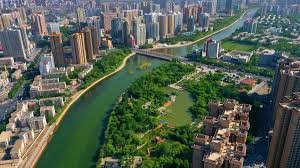
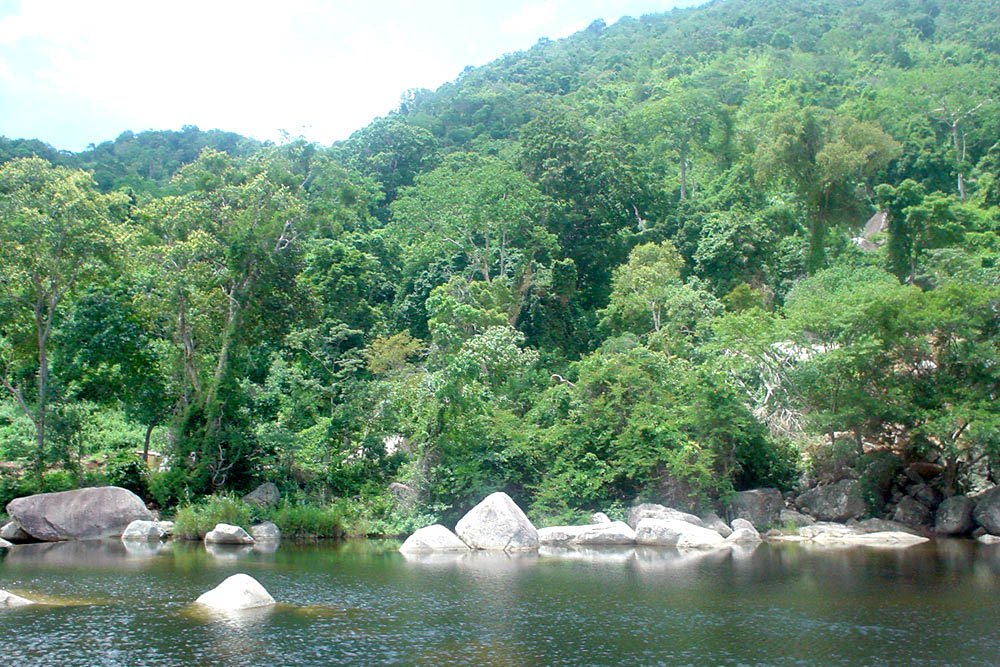
Chu Yang Sin National Park is located in Lak and Krong Bong districts, Dak Lak province, 60 km to the south-east of Buon Ma Thuot city. The national park encompasses a range of high mountains in the northern part of the Southern Annamite Mountains. The national park is centered on Mount Chu Yang Sin, which, at 2,442 m, is the highest point in the southern Annamites. The topography of the national park is characterized by steep slopes and narrow valleys.
May 28, 2025
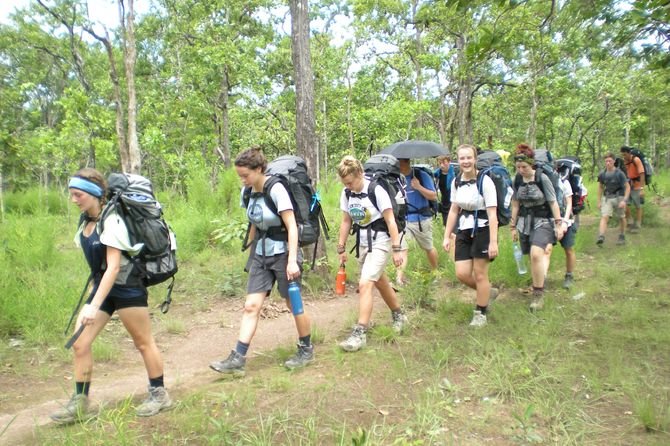
Chu Mom Ray National Park lies in the two districts of Sa Thay and Ngoc Hoi in Kon Tum Province, central highlands of Vietnam. It is the only national park in Vietnam which shares the border with the two countries of Laos and Cambodia.
May 28, 2025
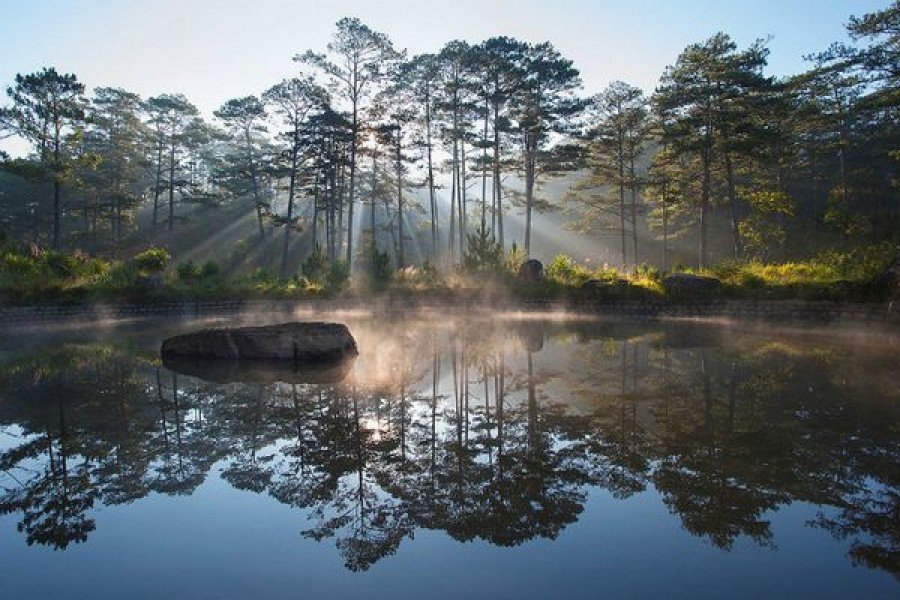
Bidoup Nui Ba National Park is situated in Lac Duong District, Lam Dong province in the central highlands of Vietnam. The park covers an area of 63,938 hectares, offering beautiful sceneries, stunning waterfalls, and diverse natural resources.
May 28, 2025
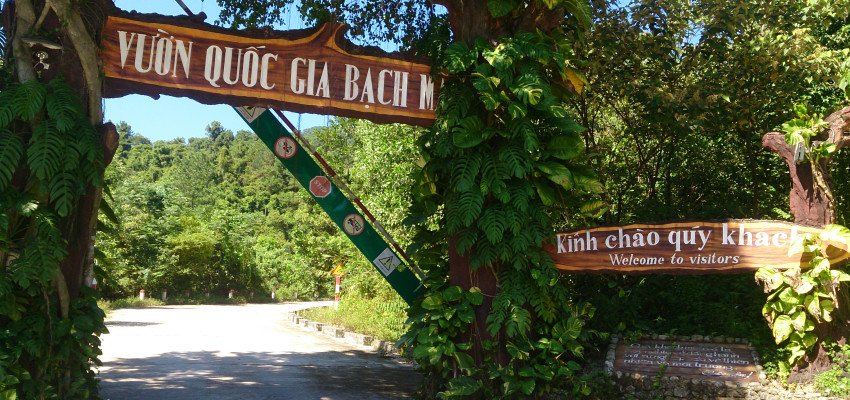
Bach Ma National Park is situated in the north central region of Vietnam, and the Annamite mountains. The national park lies on a high mountain ridge that runs west-east from the Laotian border to the East Sea at the Hai Van pass. This ridge interrupts the coastal plain of Vietnam, and, therefore, forms a biogeographical boundary between the faunas and floras of northern and southern Vietnam.
May 28, 2025
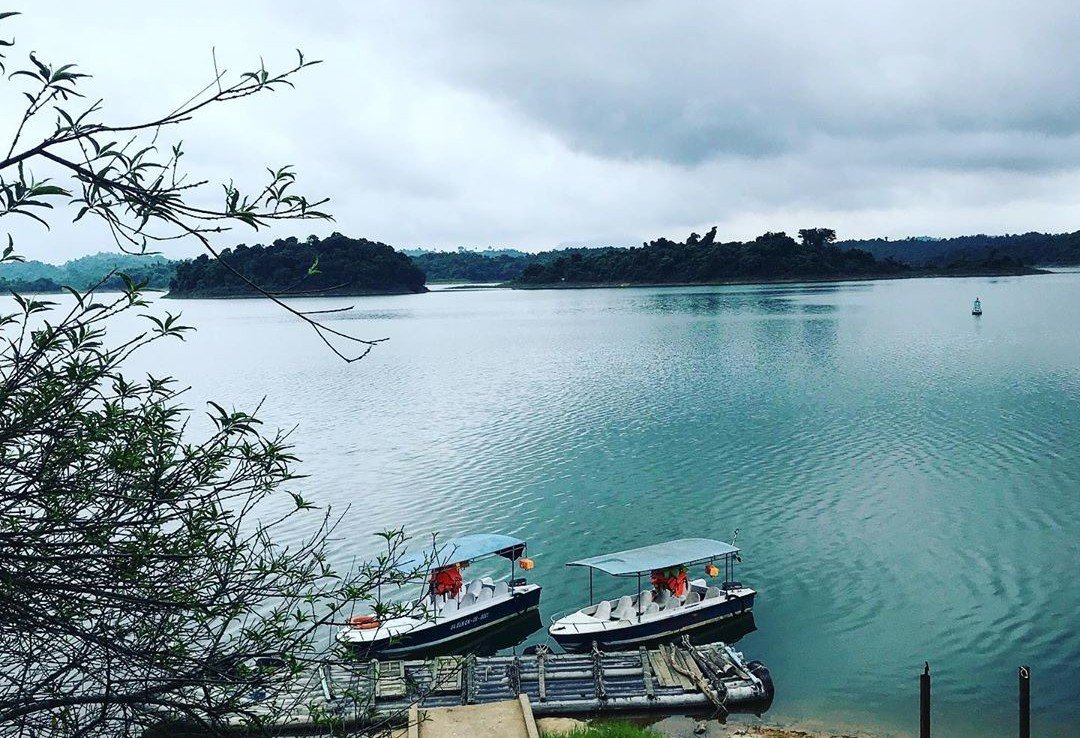
Ben En national park is situated in districts of Nhu Thanh and Nhu Xuan, Thanh Hoa Province about 200km from Hanoi. The park was established in 1992 and gradually expanded. It is not only a protected breeding ground for many rare creatures, but also an attractive destination for ecotourism.
May 28, 2025
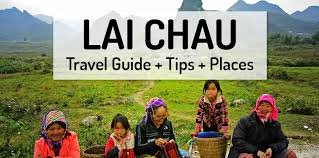
Lai Chau is a province in the northwest of Vietnam sharing borderline with Yun Nan province of China, Son La province, Dien Bien province to the west and south, and Lao Cai province to the east. The province is situated at the altitude of 1,500m above sea level, comprising high mountains, pure streams and rivers.
May 28, 2025
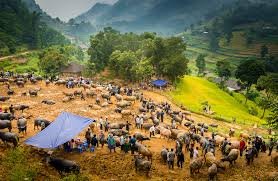
Bac Ha trekking is the best way to see Bac Ha as well as to discover its Sunday market, mountain scenery, and authentic local tribal villages.
May 28, 2025
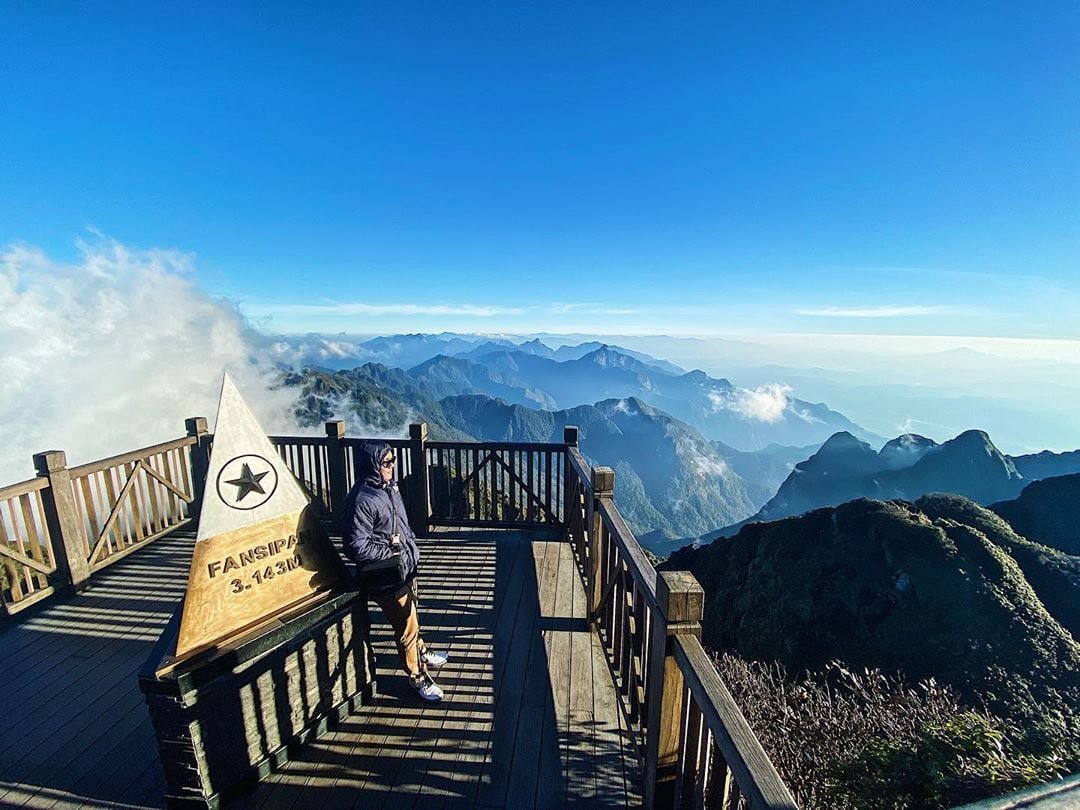
Fansipan Climbing is one of the most challenging activity in Vietnam. The Fansipan Mountain has long been the best hiking place in Vietnam. It is a favorite destination for intrepid travelers, and those who are fond of jungle trek, summit conquering, and mountain hiking.
May 28, 2025
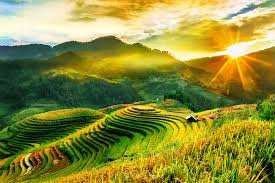
Sapa is a popular travel destination that offers the widest selection of trekking, hiking tours in Vietnam. It’s the place where a large number of tourists go to from Hanoi for some trekking through the beautiful scenery of North Vietnam’s mountains
May 28, 2025
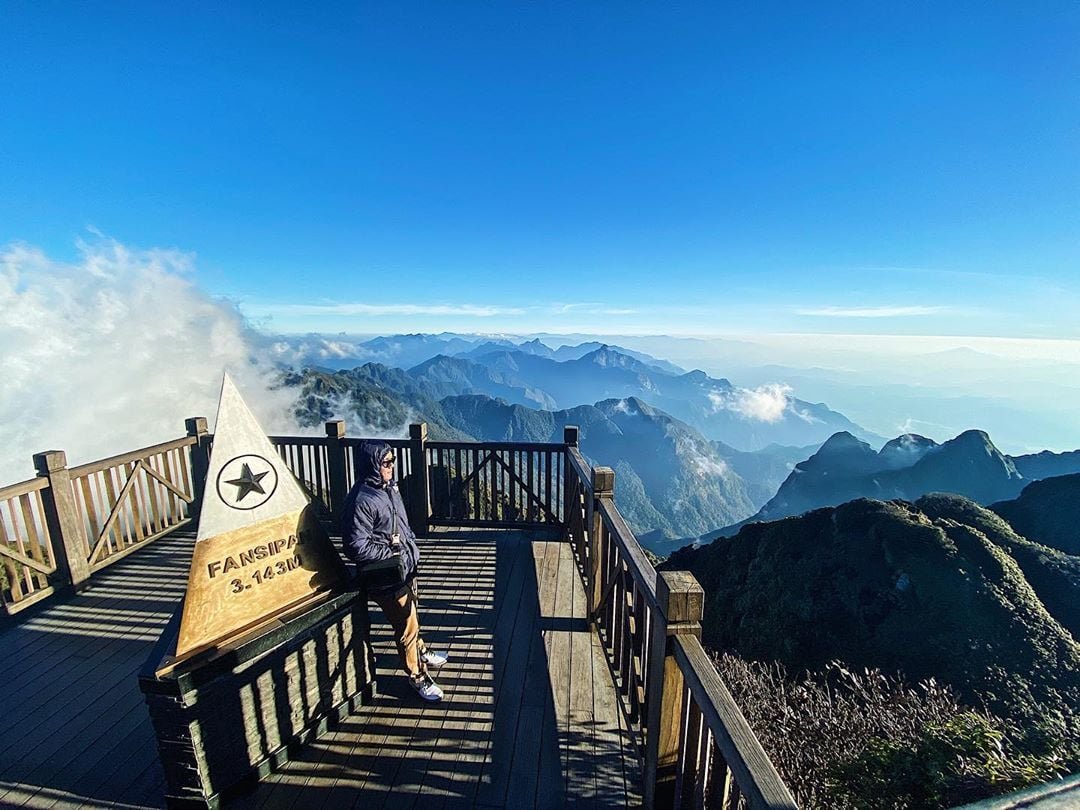
Hoang Lien National Park is situated at a height of 1,000m to 3,143m above sea level in the Hoang Lien Son Mountain Range in Sapa and Van Ban districts, Lao Cai Province, and a partly belongs to Than Uyen District, Lai Chau Province.
May 28, 2025
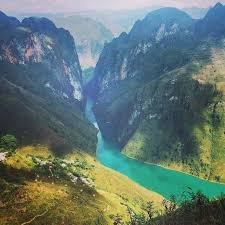
Ha Giang province is located in the northern mountainous area of Vietnam, sharing its borders with China in the north, Tuyen Quang province in the south, Cao Bang province in the east, and Yen Bai province, and and Lao Cai province in the west.
May 28, 2025
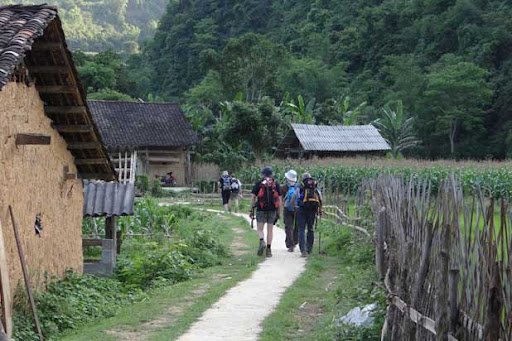
Cao Bang trekking is the best way to discover Cao Bang province as well as the northeast region of Vietnam. The place has been voted as one of top 5 trekking place in South East Asia. We at Golden Trail Travel Hiking Vietnam provide not only a wide selection of off the beaten path trekking trips in this region, but also much practical information about Cao Bang trekking, Cao Bang Vietnam trekking, Cao Bang trek, Cao Bang hiking.
May 28, 2025
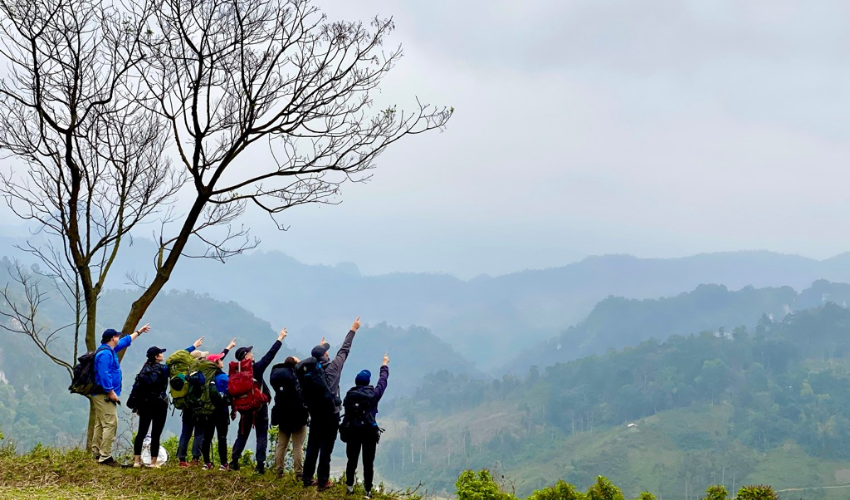
Ba Be National Park Trekking is the best way to explore the natural beauty and the unique system of flora and fauna of Ba Be. The activity also offers the chance to experience the rich ethnic culture of the Tay living within the park.
May 28, 2025
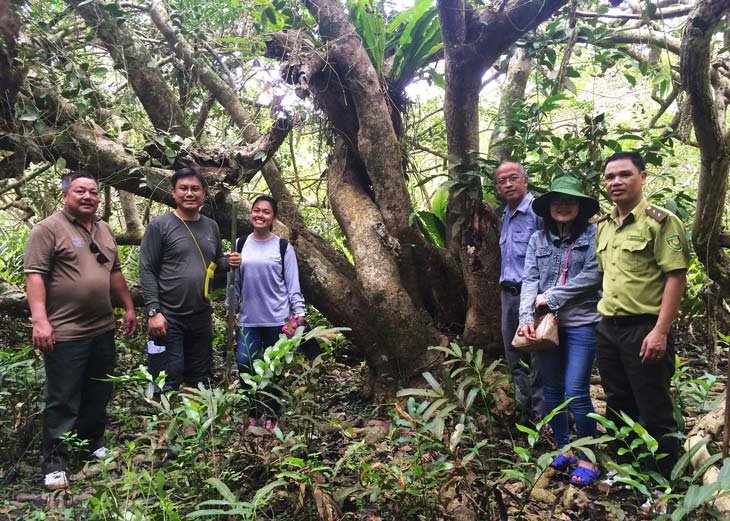
Bai Tu Long national park covers 15,783 hectares, of which forests and forest land make up 6,125 ha on more than 40 islands, and water surface accounts for 9,650 ha. It is home to 1,909 species of fauna and flora, including 72 types of animals and 30 kinds of plants listed in Vietnam’s Red Book of endangered species.
May 28, 2025

Cat Ba National Park is located in Cat Hai district, Hai Phong city in the northeast Vietnam. The national park is centered on Cat Ba island, a 28,500 ha island, which lies 20 km due east of Hai Phong city and immediately to the west of Halong bay. The national park also incorporates some of the small islands and marine waters situated to the east of Cat Ba island.
May 28, 2025
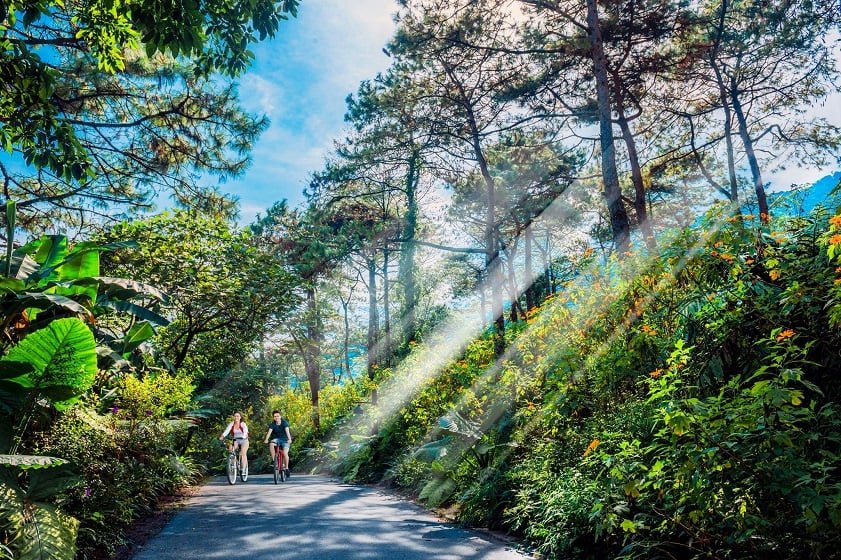
Coming to Ba Vi National Park, you will not only enjoy classic travel activities such as visit cactus gardens, Thuong Temple, French relics …you can also challenge yourself by joining a jungle trek through the park.
May 28, 2025
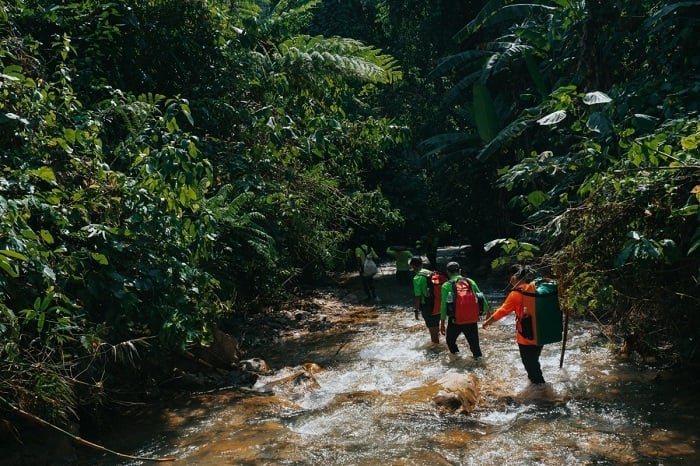
Xuan Son National Park is located 150 kilometers west of Hanoi at the entrance to the magnificent Hoang Lien Son mountain range, Phu Tho Province. The National Park is a great natural retreat and trekking area.
May 28, 2025
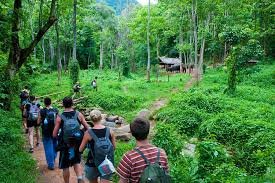
Cuc Phuong National Park is the centerpiece of Vietnam’s conservation efforts and one of the most accessible parks in Vietnam. The park is located about 120km from downtown Hanoi, and the car trip takes about 2-3 hours.
May 28, 2025
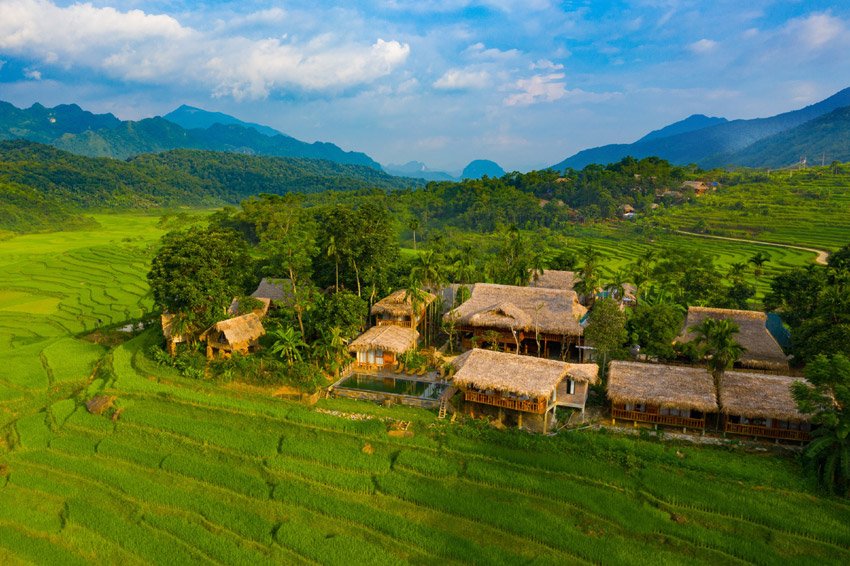
Pu Luong hiking tour is our most recommended trip since the itinerary offers you the chance to discover more the region including both the beautiful nature, rice terrace, and the authentic culture. You will have contact with different local Muong and Thai people on your Pu Luong Vietnam trek, and to experience their real, slow life.
May 28, 2025

Mai Chau Valley is located in Mai Chau District, Hoa Binh Province, approximately 135 km from Hanoi and 60 km from Hoa Binh City. Mai Chau Valley is surrounded by Thai villages scattered on the hill sides. Travelers come to Mai Chau to spend a night in a local stilt house and to experience the real life of the Thai people.
May 28, 2025